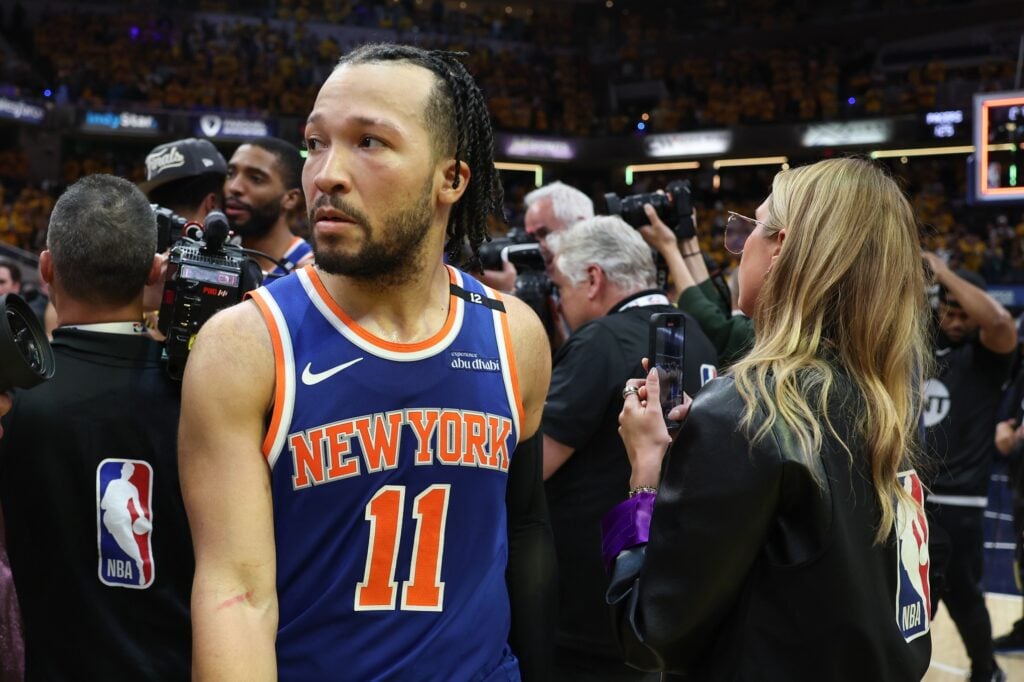NEW YORK – The NBA’s salary cap for 2025–26 stands at $154.647 million, a 10% rise from last year’s $140.588 million. However, Bobby Marks of ESPN reports that the league projects only a 7% increase for 2026–27, pushing the cap to about $165 million. A 10% hike would have set the cap at $170 million, so the NBA’s revenue hit will cost teams about $5 million in cap space. This amount might look small in an era of massive player salaries, but it matters. Why? Because the salary cap directly affects the luxury tax and apron thresholds that teams use for planning. RealGM projects the luxury tax at $200 million for 2026–27. The first and second aprons could sit at $209 million and $222 million. These numbers show how the NBA’s revenue projection impacts spending and roster-building.
NBA Set To Lose Revenue Soon But Teams Are Already Adapting
Why This Shortfall Matters
When the league signed its massive 11-year, $77 billion media-rights deal, teams expected the cap to grow by the maximum 10% yearly. This cap smoothing, as the CBA demands, was designed to avoid the wild spikes that once let the Warriors sign Kevin Durant.
Zach Kram of ESPN revealed a few days ago that the 7% rise stems from the collapse of regional sports networks, which has reduced teams’ local revenue.
That three percent drop means teams must adjust. Contract extensions often come with 8% raises baked in. If NBA revenue doesn’t grow in sync, rosters get squeezed. This could push front offices to cut costs or make bold trades.
The Decline Of RSNs
For years, regional sports networks (RSNs) propped up local NBA Revenue. If you wanted to watch your home team, you needed the right cable bundle. But that model is dying fast.
Tim Hanlon of TVRev explains, “This contract, which brings NBC, Amazon Prime Video, and ESPN/ABC into the fold, means that starting next season, the entirety of the two-month-long playoff season will be broadcast nationally. Local RSNs and over-the-air broadcast stations will no longer simulcast playoff games — a huge shift for fans used to tuning into hometown play-by-play.”
The shift reflects more than just the new TV deal. Cord-cutting is killing linear TV. Fewer households pay for cable, so RSNs are folding. That directly affects the NBA Revenue from local deals.
How Teams Are Solving The Problem
Teams are not sitting idle. Several franchises are ditching RSNs for their own direct-to-consumer services. The Clippers (ClipperVision), Jazz (Jazz+), Suns (Suns Live),, and Mavericks (MavsTV), lead the way.
The NBA is testing a “local League Pass,” letting fans subscribe directly to watch hometown games, no matter where they live. Amazon wants in too, offering local streaming bundles through Prime.
This shift could lift the NBA’s revenue higher than RSNs ever did. Fans get more access. Teams get new cash streams.
Innovation Will Save The Day

Teams could also join forces, working together — even across sports — to build bigger streaming hubs. The Gotham Sports App is an early sign. It combines the YES Network and MSG Networks, giving New York sports fans a one-stop shop for the Yankees, Knicks, Nets, Rangers, Islanders, Devils, and Sabres.
Fans can expect big changes in how broadcasters present games in this next rights cycle. Teams like the Clippers, with their brand-new Intuit Dome, are pushing the boundaries of fan engagement. Imagine what more they can do with new apps. Picture watching your local team with multiple camera angles, real-time stats, and interactive features that bring you closer to the action.
In other words, yes, the NBA’s revenue will dip in 2026. But innovation and direct access will make sure it rebounds — stronger than ever. Teams and tech giants have too much at stake to let this moment slip.
So buckle up. The league may lose some dollars at first, but the blueprint for its next Golden Era is already here.
© Alonzo Adams-Imagn Images
The post NBA Set To Lose Revenue Soon But Teams Are Already Adapting appeared first on Last Word On Basketball.